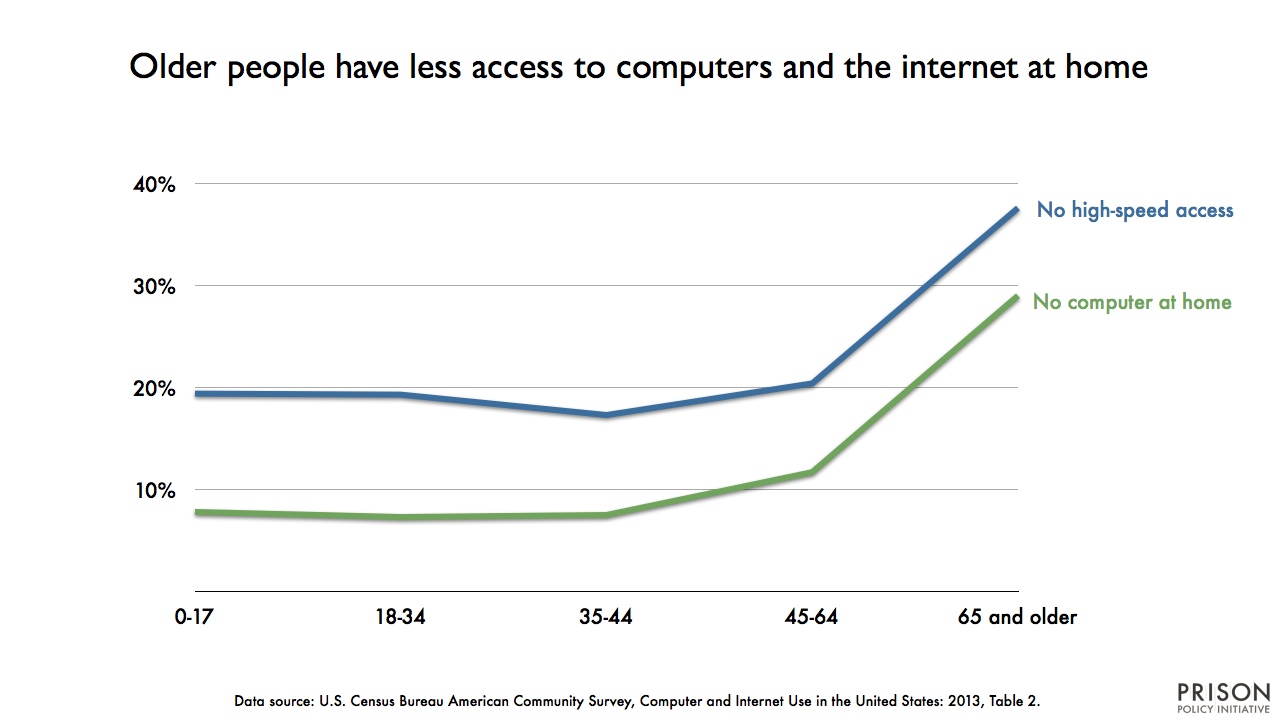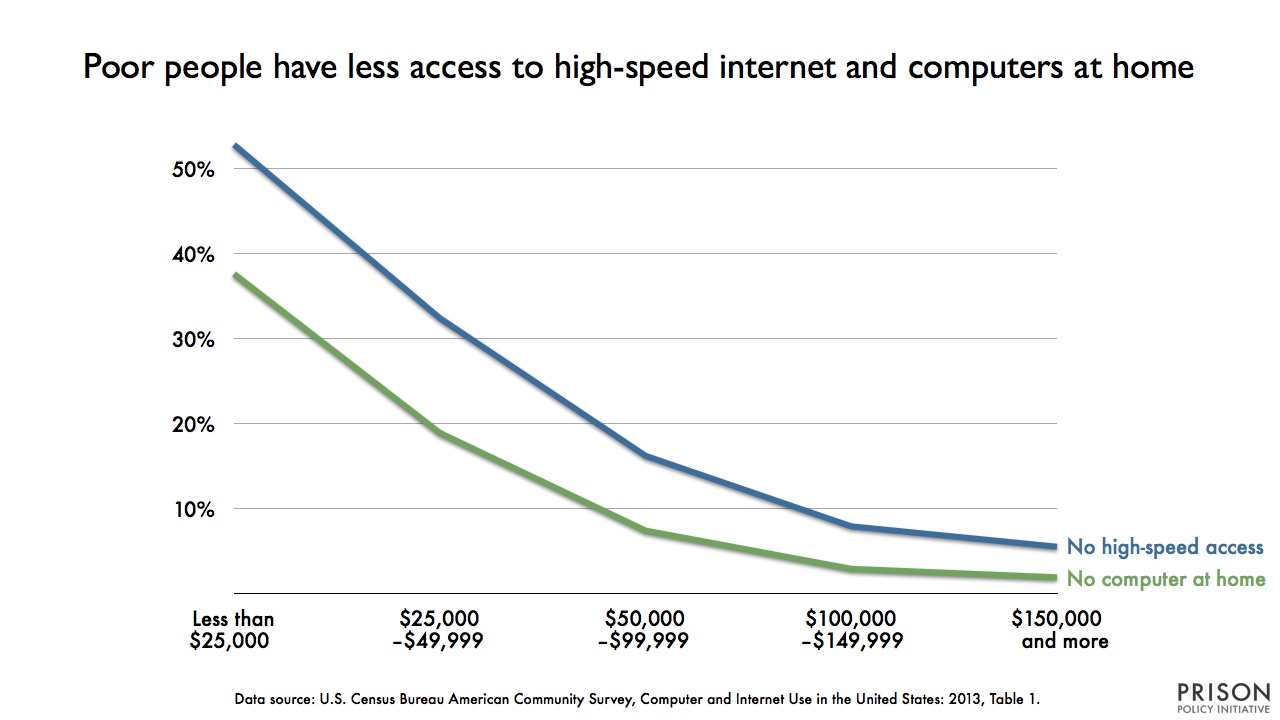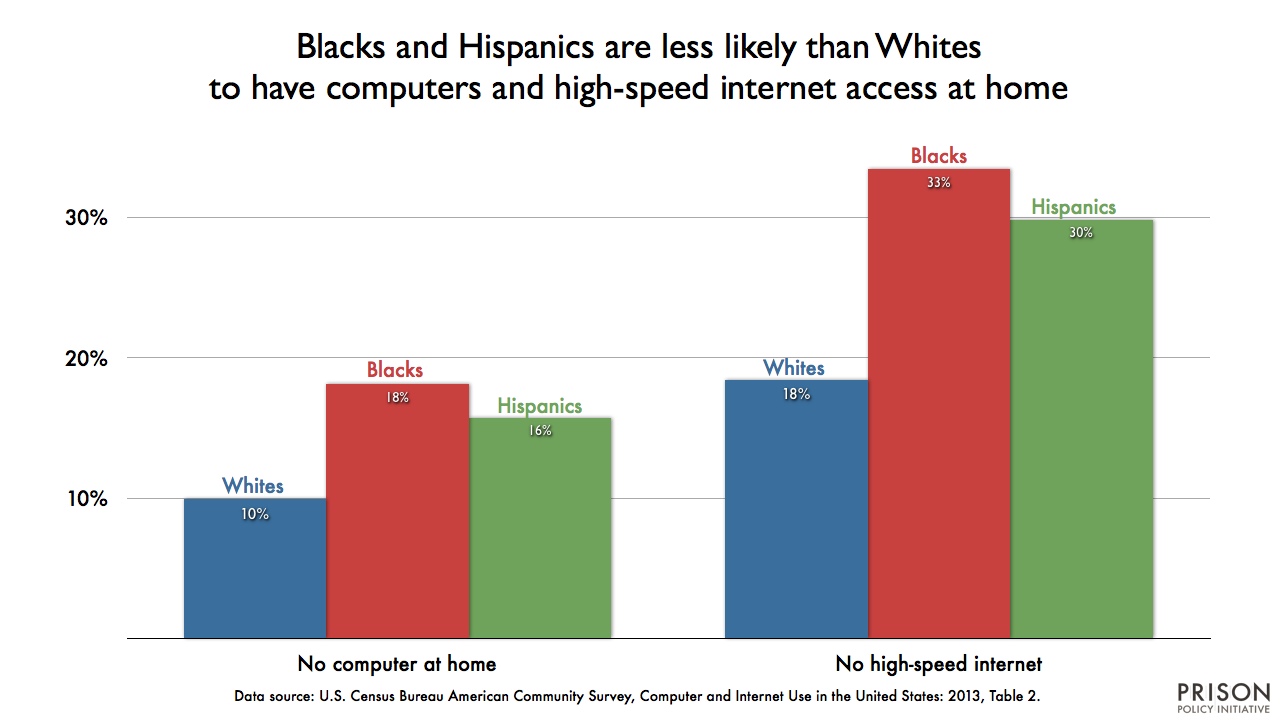The demographics of computer ownership and high-speed internet access
The poor, the elderly, and African-Americans and Latinos are less likely to have computers or high-speed internet at home. Replacing regular jail visits with computer video chats is a bad idea.
by Peter Wagner, March 17, 2015
As we explained in our report about the video visitation industry that wants jails to replace free in-person jail visits with expensive computer video chats, not everyone has computers at home or high-speed internet. It’s clear — and should be no surprise to industry leaders — that access is the most restricted in poor households, in African-American and Latino households, and in the homes of older people.
We used the poverty data in our report, but we thought graphing all of this data might be useful for our colleagues fighting proposals to replace traditional government services with mandatory internet-based services. Without a doubt, the internet is a great tool, but we are not yet in a world where we can assume that everyone has access to this technology.
Click for larger versions:







[…] over half have some access to high-speed Internet. The elderly, Black and Hispanic Americans are also less likely to have computer and high-speed Internet […]